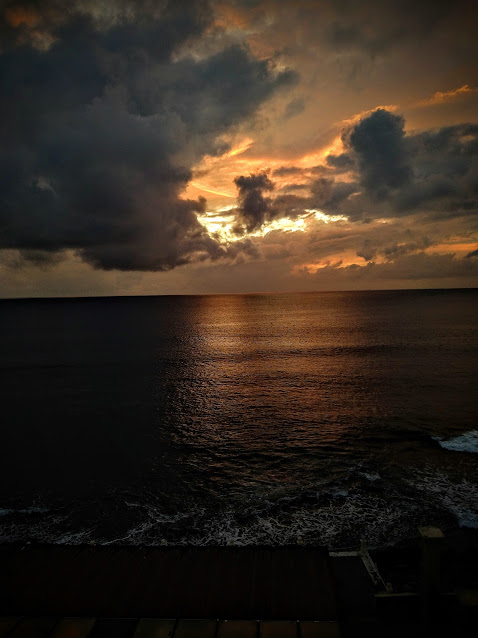As promised in the previous post, here is the second part of my journey to Sri Lanka. After our trip to Sigiriya, the stone fortress, we felt so much let down by our tour operator that we decided to go the same way as we usually do, by ourselves.
It was by a stroke of luck that one day as we were strolling the city streets we decided to call a tuk-tuk. The driver who stopped at our request was an elderly man with a bright smile and a few teeth left. He spoke good English, and during our journey to the hotel, we asked a few questions about the country and culture. Generally, the drivers do not have a taximeter and tend to charge according to what they think you can afford.
In those cases, to avoid bad surprises, you must agree to the price beforehand and try to bargain a bit.
When we asked the price the driver pointed at the taximeter. "I don't make up prices," he smiled.
We asked his name. "Everybody calls me Lucky."
And so we agreed with Lucky that for the rest of our holiday, he would have been our driver. We exchanged telephone numbers and from the following day on we explored the city and the surroundings with him.
Thinking about all the things we could see in the whole country, we understood we didn't have enough time for everything. Yet, I wanted absolutely to visit with the due calm and time the national parks. The best solution was the Sinharaja forest reserve.
Lucky helped us in this case too, acting as a tour guide, and with a couple of calls, he arranged us a driver to the park and back.
From driver he'd become our fixer, wherever we needed to go, whatever we needed to have, he could arrange it.
In the end, he said he was Lucky, but in reality, we were the lucky ones to find him.
A few days later, we left and headed for the park. We were told that we needed special socks to protect us from leaches, and we purchased them, although we were wondering about the environment we were going to visit, to need such protection.
But let me give you a few information about the park.
Sinharaja is a forest reserve and because of its wide biodiversity, it has been designated a Biosphere Reserve and World Heritage Site by UNESCO.
Sinharaja's importance grew over the years as it became the country's last viable area of primary tropical rainforest. Over 60% of the trees are endemic, and many of them are considered rare. It is home to 50% of Sri Lankan's endemic species of animals including birds.
The hilly virgin rainforest, part of the Sri Lanka lowland rain forests ecoregion, was saved from the worst of commercial logging by its inaccessibility and was designated a World Biosphere Reserve in 1978 and a World Heritage Site in 1988.
With this in mind, you can understand why we wanted to visit it, and let's the images talk for themselves:
You might wonder about whether the protection for the leeches was necessary. The answer is: yes, we came back to the entrance with a couple of those little bugs attached to the protections we were wearing.
I can't recommend enough visiting Sri Lanka, it's such a beautiful country with an amazing natural environment that will for sure enchant whoever reaches it.
There have been many times my memory wandered back to the forest or along the beaches. Maybe one day I'll be back, and with this gorgeous sunset over the sea, I give you an appointment for the next adventure.

























No comments:
Post a Comment